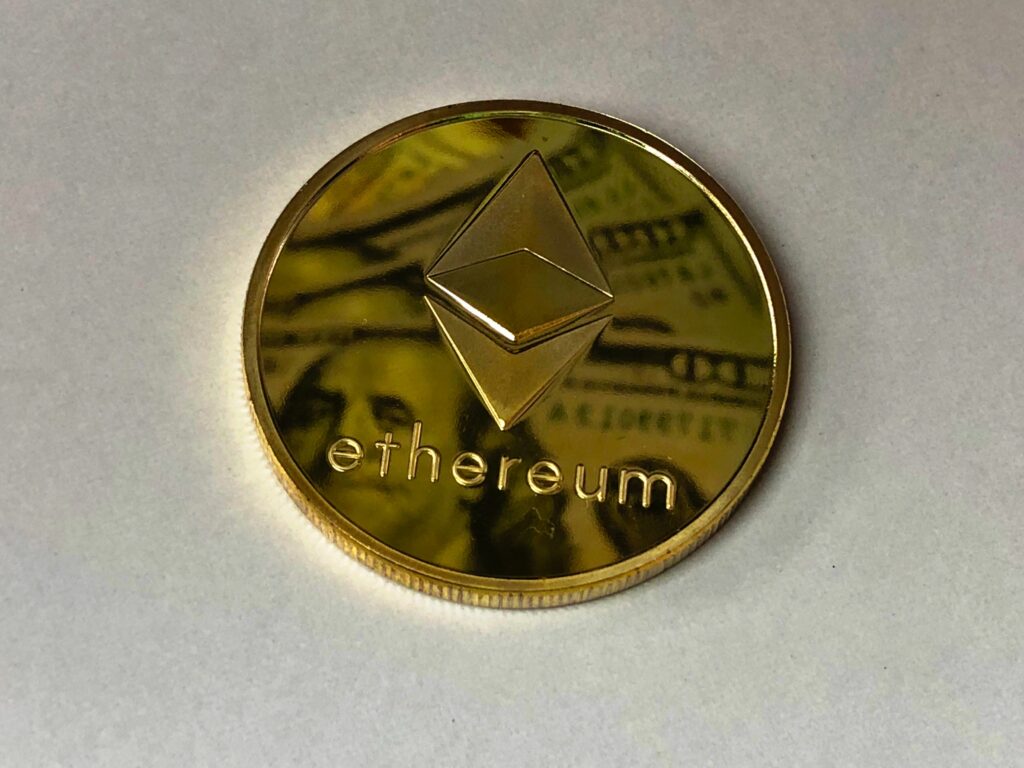You’re about to embark on an exciting journey into the world of Ethereum (ETH). As one of the most popular and sought-after cryptocurrencies, Ethereum has established itself as a force to be reckoned with in the digital landscape. Offering a decentralized platform for developers to create and execute smart contracts, Ethereum empowers individuals and businesses alike to build innovative and groundbreaking applications. From decentralized finance to non-fungible tokens (NFTs), Ethereum’s diverse ecosystem is revolutionizing various industries. So, fasten your seatbelt and get ready to discover the limitless potential of Ethereum (ETH).
What is Ethereum?
Introduction to Ethereum
Ethereum, often referred to as Ether or ETH, is a decentralized blockchain platform that enables the development of smart contracts and decentralized applications (DApps). It was proposed by Vitalik Buterin in late 2013 and launched in 2015. Ethereum has gained significant attention and popularity due to its innovative approach to blockchain technology.
Key Features of Ethereum
One of the key features of Ethereum is its ability to execute smart contracts, which are self-executing contracts with predefined rules and conditions. These contracts automatically enforce the terms and conditions written in code, eliminating the need for intermediaries in transactions.
Another important feature of Ethereum is the Ethereum Virtual Machine (EVM), a runtime environment that executes smart contracts. The EVM is a Turing-complete virtual machine, meaning it can run any code given enough time and resources.
Furthermore, Ethereum provides a platform for the development of decentralized applications (DApps). Unlike traditional applications, DApps run on a decentralized network of computers, known as nodes, rather than a single central server. This allows for increased transparency, security, and censorship resistance.
Ethereum Virtual Machine (EVM)
The Ethereum Virtual Machine (EVM) is a crucial component of the Ethereum platform. It is responsible for executing smart contracts and running decentralized applications. The EVM is designed to be a sandboxed and isolated environment, ensuring that the code within it cannot interfere with the rest of the Ethereum network.
The EVM operates on a concept known as gas. Gas is a unit of measurement used to determine the computational effort required to execute a smart contract or transaction. Users must pay gas fees in Ether in order to execute operations on the Ethereum network. This mechanism helps prevent spam and ensures that the network can maintain efficiency.
Smart Contracts on Ethereum
Smart contracts are self-executing contracts with the terms of the agreement directly written into code. These contracts automatically execute actions once certain conditions are met. They eliminate the need for intermediaries, such as lawyers or banks, as the code enforces the terms of the contract.
Smart contracts on Ethereum are written in Solidity, a programming language specifically designed for the platform. Solidity supports features like inheritance, libraries, and complex user-defined types, allowing developers to create sophisticated and secure contracts.
Smart contracts have various use cases, ranging from crowdfunding and decentralized finance to supply chain management and identity verification. They have revolutionized the way contracts are executed and have opened up new possibilities for decentralized applications.
Decentralized Applications (DApps)
Decentralized applications, or DApps, are applications that run on a decentralized network of computers, such as Ethereum. These applications are open-source and have their code and data stored on the blockchain, making them transparent and resistant to censorship.
DApps leverage the underlying capabilities of blockchain technology, such as smart contracts and immutability, to enable trustless and secure interactions. They can be used for a wide range of purposes, from financial services and gaming to social media and governance.
DApps have gained significant attention in recent years, with notable examples like decentralized exchanges, prediction markets, and decentralized social networks. As more developers and users join the Ethereum ecosystem, the potential for innovative and transformative DApps continues to grow.
Understanding Ether (ETH)
Introduction to Ether
Ether (ETH) is the native cryptocurrency of the Ethereum network. It serves as a medium of exchange within the platform and is used to pay for transaction fees and computational services.
Unlike Bitcoin, which is primarily used as a digital currency, Ether has broader utility within the Ethereum ecosystem. It not only acts as a store of value but also serves as “gas” to power computations and execute smart contracts.
The Role of ETH in the Ethereum Network
Ether plays a crucial role in the Ethereum network, serving as the fuel for all operations and interactions. When users initiate transactions or execute smart contracts, they must pay a certain amount of Ether as gas fees. These fees incentivize miners to include transactions in a block and secure the network.
Additionally, Ether is used as a reward for miners who successfully validate and add new blocks to the blockchain. This incentivizes miners to participate in the network and ensures the security and integrity of the Ethereum network.
Furthermore, Ether is often used as a fundraising mechanism for startups and projects through Initial Coin Offerings (ICOs) or Initial Exchange Offerings (IEOs). Investors can purchase tokens issued on the Ethereum blockchain by using Ether, providing a new method for capital formation.
Uses and Benefits of ETH
Ether has various uses and benefits within the Ethereum ecosystem. Apart from being a medium of exchange and a store of value, Ether has become a widely accepted cryptocurrency that can be traded on numerous cryptocurrency exchanges.
Furthermore, Ether can be staked to participate in Ethereum’s upcoming upgrade to Ethereum 2.0. Staking involves locking up Ether in a smart contract to support the network’s security and consensus mechanism. In return, stakers receive rewards in the form of additional Ether.
Ether’s utility and widespread adoption make it an attractive asset for investors and users alike. As the Ethereum ecosystem continues to grow and mature, the demand for Ether is expected to increase, potentially driving its value upwards.

Ethereum Blockchain
Ethereum’s Consensus Mechanism
The Ethereum blockchain operates on a consensus mechanism known as Proof of Stake (PoS). This consensus algorithm is designed to replace the current Proof of Work (PoW) mechanism, which requires miners to solve complex mathematical problems to validate transactions and add blocks to the blockchain.
Proof of Stake, on the other hand, selects validators to create new blocks based on their ownership of the cryptocurrency. Validators are chosen based on the amount of cryptocurrency they hold and are willing to “stake” as collateral. This shift to PoS has the potential to greatly reduce energy consumption and increase scalability compared to PoW.
Components of the Ethereum Blockchain
The Ethereum blockchain consists of several key components that work together to enable its decentralized functionality. These include:
-
Blocks: The Ethereum blockchain is made up of a series of blocks that contain a collection of transactions and other data. Each block holds a unique identifier and a reference to the previous block, forming a chain of blocks.
-
Transactions: Transactions are the primary units of value transfer on the Ethereum network. They contain information about the sender, recipient, and the amount of Ether being transferred.
-
Smart Contracts: Smart contracts are self-executing contracts with the terms encoded in code. They reside on the Ethereum blockchain and are executed by the Ethereum Virtual Machine (EVM) when triggered by a transaction.
-
Nodes: Nodes are individual computers that participate in the Ethereum network. They store a copy of the entire blockchain and help validate transactions and maintain the network’s integrity.
-
Consensus Mechanism: Ethereum’s consensus mechanism ensures that all nodes in the network agree on the state of the blockchain. In the current version, this mechanism is Proof of Work (PoW), but Ethereum is transitioning to Proof of Stake (PoS) with the upcoming Ethereum 2.0 upgrade.
Difference Between Ethereum and Bitcoin Blockchains
While both Ethereum and Bitcoin are blockchain-based platforms, there are several key differences between the two.
-
Purpose: Bitcoin primarily serves as a digital currency and a store of value, facilitating peer-to-peer transactions. Ethereum, on the other hand, focuses on enabling the development of decentralized applications and the execution of smart contracts.
-
Smart Contracts: While Bitcoin has limited support for smart contracts, Ethereum is specifically designed to execute complex smart contracts. Ethereum’s programming language, Solidity, allows developers to create sophisticated and autonomous applications.
-
Consensus Mechanism: While both Ethereum and Bitcoin initially relied on Proof of Work (PoW) as their consensus mechanism, Ethereum is transitioning to Proof of Stake (PoS) with the upcoming Ethereum 2.0 upgrade. This shift aims to address scalability and energy consumption concerns.
-
Development Community: Ethereum has a larger and more active development community compared to Bitcoin. This active community has contributed to the rapid growth of the Ethereum ecosystem and the development of innovative applications and technologies.
Ethereum Development
Ethereum Wallets
Ethereum wallets are software applications that allow users to securely store, manage, and interact with their Ether and other cryptocurrencies on the Ethereum network. Wallets provide a user-friendly interface to view account balances, send and receive transactions, and interact with decentralized applications.
There are different types of Ethereum wallets available:
-
Software Wallets: These wallets are software applications that can be installed on computers or mobile devices. They provide full control over the user’s private keys and are available in various formats, including desktop wallets, mobile wallets, and web wallets.
-
Hardware Wallets: Hardware wallets are physical devices that securely store the user’s private keys offline. They provide an extra layer of security by isolating the private keys from potential malware or hacking attempts.
-
Paper Wallets: Paper wallets involve printing the user’s private and public keys on a physical piece of paper. While they are considered secure, users need to take extra precautions to protect the paper wallet from physical damage or loss.
Ethereum Programming Languages
Ethereum supports several programming languages for developing smart contracts. The most commonly used programming language is Solidity, which is specifically designed for Ethereum. Solidity is statically typed and resembles JavaScript, making it accessible to developers with prior programming experience.
Other programming languages that can be used to develop Ethereum smart contracts include:
-
Vyper: Vyper is a contract-oriented programming language that aims to improve security and simplicity. It has a minimalistic design with a focus on readability and eliminates some of the potential security vulnerabilities associated with Solidity.
-
Serpent: Serpent is another high-level programming language that was one of the early options for developing smart contracts on Ethereum. While it is no longer actively maintained, developers with existing Serpent code can still use it.
Ethereum Development Frameworks
To simplify the process of developing decentralized applications on Ethereum, various development frameworks and tools have been created. These frameworks provide pre-built libraries, templates, and tools that make it easier for developers to build, test, and deploy Ethereum applications.
Some popular Ethereum development frameworks include:
-
Truffle: Truffle is a popular development framework that provides a suite of tools for creating and managing smart contracts. It offers built-in testing, deployment, and debugging capabilities, making it a popular choice for developers.
-
Embark: Embark is an open-source framework that enables developers to easily build and deploy decentralized applications. It provides tools for contract development, testing, and deployment, as well as a development server for running DApps locally.
-
Hardhat: Hardhat is a development environment and task runner for Ethereum projects. It offers a wide range of features, including built-in testing, debugging, and deployment capabilities.
These frameworks, along with other tools and libraries, greatly simplify the development process and help accelerate the adoption of Ethereum as a platform for decentralized applications.

Ethereum Improvement Proposals (EIPs)
Introduction to EIPs
Ethereum Improvement Proposals (EIPs) are proposals for changes or enhancements to the Ethereum blockchain platform. They are similar to Bitcoin’s BIPs (Bitcoin Improvement Proposals) and serve as a means of communication and coordination within the Ethereum community.
EIPs can range from technical improvements to protocol changes, and they are designed to facilitate open discussions and collaboration among developers, researchers, and stakeholders in the Ethereum ecosystem.
Popular EIPs
Over the years, numerous EIPs have been proposed and implemented on the Ethereum blockchain. Some of the most popular and significant EIPs include:
-
EIP-20 (ERC-20): This EIP introduced the ERC-20 token standard, which defines a set of rules and functions for creating and managing tokens on the Ethereum blockchain. ERC-20 tokens have become the de facto standard for token issuance and interoperability in the Ethereum ecosystem.
-
EIP-721 (ERC-721): EIP-721 introduced the ERC-721 token standard, which is used for creating and managing non-fungible tokens (NFTs) on the Ethereum blockchain. NFTs represent unique assets, such as digital art, collectibles, and virtual real estate.
-
EIP-1559: EIP-1559 proposes changes to the Ethereum transaction pricing mechanism, aiming to make gas fees more predictable and efficient. It introduces a base fee that is burned, reducing the overall supply of Ether over time.
Process of Implementing EIPs
Implementing an EIP involves a collaborative process within the Ethereum community. Here is a general overview of the process:
-
Proposal: An individual or a group of individuals propose an EIP by submitting a formal document outlining the proposed changes, along with the rationale and technical specifications.
-
Discussions: The proposal is shared with the Ethereum community, leading to discussions, debates, and feedback from developers, researchers, and other stakeholders. Technical details, potential risks, and benefits are thoroughly evaluated.
-
Accepted or Rejected: After careful consideration and community consensus, the proposal is accepted or rejected. If accepted, it moves to the implementation phase.
-
Implementation: The suggested changes are implemented in the Ethereum codebase by developers. This may require updates to the Ethereum clients, such as Geth and Parity, as well as the Ethereum Virtual Machine (EVM).
-
Activation: Once the implementation is complete, the updated protocol is typically activated through a hard fork or a network upgrade. This ensures that all participants in the Ethereum network are using the latest version of the protocol.
The EIP process ensures that changes to the Ethereum platform are well-vetted, thoroughly discussed, and implemented in a decentralized and collaborative manner.
Ethereum 2.0
Introduction to Ethereum 2.0
Ethereum 2.0, also known as ETH2 or Serenity, is a major upgrade to the Ethereum blockchain. It aims to address the scalability, security, and energy consumption challenges faced by the current Ethereum network.
The main feature of Ethereum 2.0 is the transition from the current Proof of Work (PoW) consensus mechanism to Proof of Stake (PoS). This change will significantly reduce the energy consumption of the network and improve its scalability.
Proof of Stake (PoS) in Ethereum 2.0
Proof of Stake (PoS) is a consensus mechanism in which validators are selected to create new blocks based on the amount of cryptocurrency they hold and are willing to “stake” as collateral. In Ethereum 2.0, validators will lock up their Ether in a smart contract to participate in block creation and validation.
By transitioning to PoS, Ethereum aims to improve the security, energy efficiency, and scalability of the network. PoS reduces the dependence on computational power, making it more cost-effective and environmentally friendly.
Shard Chains and Scalability
Scalability has been a significant challenge for Ethereum due to the limitations of the current blockchain structure. Ethereum 2.0 introduces the concept of shard chains to address this issue.
Shard chains are independent chains that run in parallel to the main Ethereum chain, known as the beacon chain. Each shard chain has its own set of validators and processes a subset of transactions, allowing for parallel processing and increased scalability.
The introduction of shard chains in Ethereum 2.0 will significantly increase the transaction throughput and reduce network congestion, enabling the network to handle a much larger number of transactions per second.
Benefits and Challenges of Ethereum 2.0
Ethereum 2.0 offers several benefits and advantages over the current Ethereum network:
-
Scalability: The introduction of shard chains in Ethereum 2.0 will greatly improve the scalability of the network, allowing it to process a higher number of transactions.
-
Energy Efficiency: The transition to Proof of Stake (PoS) in Ethereum 2.0 will significantly reduce the energy consumption of the network compared to the current Proof of Work (PoW) mechanism.
-
Security: PoS enhances the security of the Ethereum network by making it economically costly to attack the system. Validators are required to lock up their cryptocurrency as collateral, ensuring that they have a stake in maintaining the network’s integrity.
However, there are also challenges and considerations associated with the transition to Ethereum 2.0. These include:
-
Complexity: The upgrade to Ethereum 2.0 is a complex process that involves significant changes to the underlying infrastructure. Ensuring a smooth transition and maintaining compatibility with existing applications and smart contracts is a challenge.
-
Network Consensus: Achieving consensus among the Ethereum community and stakeholders on the implementation and timeline of Ethereum 2.0 is a challenge. Balancing the interests of different stakeholders and reaching a broad consensus is crucial for the successful adoption of Ethereum 2.0.
-
Ethereum 1.x Compatibility: Ensuring compatibility and smooth communication between Ethereum 1.x and Ethereum 2.0 is a challenge. This includes considerations such as transferring assets between the two chains and maintaining interoperability.
Despite these challenges, Ethereum 2.0 represents an exciting evolution of the Ethereum platform, with the potential to significantly enhance its scalability, security, and energy efficiency.

Ethereum Use Cases
Tokenization of Assets
One of the key use cases of Ethereum is the tokenization of assets. By representing real-world assets, such as real estate, artwork, or even company shares, on the Ethereum blockchain, these assets can be easily traded, divided, and transferred digitally.
Asset tokenization provides increased liquidity, accessibility, and transparency. It allows for fractional ownership, enabling investors to purchase and trade small fractions of assets that were traditionally difficult to access. Additionally, tokenized assets can be traded globally 24/7, removing traditional barriers and reducing transaction costs.
Decentralized Finance (DeFi)
Decentralized Finance, or DeFi, has emerged as one of the most popular and promising use cases of Ethereum. DeFi refers to a broad category of financial applications built on the Ethereum blockchain that aim to provide traditional financial services, such as lending, borrowing, and trading, in a decentralized and open manner.
DeFi applications leverage smart contracts to automate financial processes and eliminate the need for intermediaries, such as banks or traditional financial institutions. This offers increased access, transparency, and efficiency compared to the traditional financial system.
The DeFi ecosystem on Ethereum has witnessed exponential growth, with a wide range of applications, including decentralized exchanges, lending platforms, stablecoins, and yield farming opportunities. DeFi has the potential to revolutionize traditional finance by providing accessible and inclusive financial services to individuals worldwide.
Non-Fungible Tokens (NFTs)
Non-Fungible Tokens (NFTs) have gained significant attention in recent years, opening up new opportunities for digital art, collectibles, and virtual assets. NFTs are unique digital assets that can represent ownership of a specific item or piece of content, such as artwork, music, or in-game items.
Since NFTs are stored on the Ethereum blockchain, they can be easily bought, sold, and traded. Each NFT contains a unique identifier and metadata that specifies its characteristics and provenance. This creates scarcity, authenticity, and traceability for digital assets, providing new possibilities for creators, collectors, and investors.
The NFT market on Ethereum has seen tremendous growth, with high-profile sales of digital art and virtual assets. However, it is important to address concerns regarding environmental impact and digital rights management, as the NFT market continues to evolve and expand.
Supply Chain Management
Blockchain technology, including Ethereum, has the potential to revolutionize supply chain management by providing increased transparency, traceability, and efficiency.
By recording and verifying transactions on a decentralized and immutable ledger, Ethereum can enable end-to-end visibility and trust in supply chains. This can help prevent fraud, counterfeiting, and tampering, as every transaction and event is recorded and permanently stored on the blockchain.
Furthermore, by leveraging smart contracts, Ethereum can automate various aspects of supply chain management, such as inventory management, payment processing, and contract enforcement. This reduces the need for intermediaries, streamlines processes, and ensures compliance with predefined rules and conditions.
Identity Management
Identity management is another key use case of Ethereum. By leveraging the self-sovereign identity model, individuals can have control over their personal data and selectively share it with trusted parties.
Ethereum enables the creation of decentralized identity solutions that allow users to store their identity information on the blockchain. These solutions provide increased privacy, security, and portability compared to traditional identity systems.
Decentralized identity on Ethereum can be used for various purposes, such as digital identity verification, authentication, and credentials. It has the potential to revolutionize industries such as healthcare, finance, and government, by providing individuals with ownership and control over their personal data.
Ethereum and Enterprise Adoption
Adoption by Corporations and Governments
In recent years, Ethereum has gained significant traction among corporations and governments exploring blockchain technology. Many entities are recognizing the potential of Ethereum’s decentralized and programmable infrastructure to streamline business processes, improve transparency, and reduce costs.
Corporations across industries, such as finance, supply chain, and energy, are exploring the use of Ethereum for various applications like decentralized finance, supply chain management, and tokenization of assets. Several major companies, including JPMorgan, Microsoft, and Samsung, have invested in Ethereum-based projects and initiatives.
Furthermore, governments are also exploring the use of Ethereum for public services, such as identity management, voting systems, and record-keeping. Ethereum’s transparency, security, and immutability make it an attractive option for governments seeking to modernize and digitize their operations.
Enterprise Ethereum Alliance (EEA)
The Enterprise Ethereum Alliance (EEA) is a global organization that brings together corporations, startups, and technology providers to collaborate on developing and adopting Ethereum-based solutions in an enterprise context.
The EEA aims to drive the mass adoption of Ethereum by establishing industry standards, sharing best practices, and facilitating collaboration among members. It provides a platform for companies to network, collaborate, and learn from each other’s experiences in developing and implementing Ethereum solutions.
Some notable members of the EEA include Intel, Accenture, Mastercard, and JPMorgan. The EEA’s efforts have played a significant role in accelerating enterprise adoption of Ethereum and fostering innovation in the field of blockchain technology.
Blockchain Interoperability
Interoperability refers to the ability of different blockchain networks to communicate and interact with each other. Ethereum has been at the forefront of efforts to achieve blockchain interoperability, enabling seamless transfer of assets and information between different blockchain networks.
Projects like Polkadot, Cosmos, and Chainlink aim to create interoperability protocols that allow Ethereum to communicate with other blockchains, both within and outside the Ethereum ecosystem. This enables cross-chain transactions, data sharing, and the exchange of digital assets between different blockchains.
Interoperability is crucial for the growth and adoption of blockchain technology, as it allows for collaboration and synergy between different networks. Ethereum’s commitment to interoperability positions it as a key player in the evolving blockchain ecosystem.

Ethereum Community and Governance
Ethereum Foundation
The Ethereum Foundation is a non-profit organization dedicated to supporting the development and adoption of Ethereum. Founded in 2014, it plays a vital role in funding research, development, and community initiatives related to Ethereum.
The Ethereum Foundation focuses on various areas, including protocol research and development, developer education and support, and ecosystem expansion. It provides grants to individuals and projects that contribute to the Ethereum ecosystem and supports the community through events, conferences, and education programs.
The Ethereum Foundation has been instrumental in the growth and success of Ethereum, with its continued support and dedication to advancing the ecosystem.
Vitalik Buterin – The Creator
Vitalik Buterin is the co-founder and creator of Ethereum. Born in Russia and raised in Canada, Buterin became interested in blockchain technology at an early age and went on to develop Ethereum as a decentralized platform for smart contracts and decentralized applications.
Buterin’s vision and technical expertise have been crucial in shaping the direction and development of Ethereum. His contributions to the blockchain industry have earned him recognition and acclaim, with Forbes including him on its “30 Under 30” list and Time Magazine naming him in its “100 Most Influential People” list.
As the face of Ethereum, Buterin continues to be actively involved in the community, participating in conferences and events and advocating for the potential of blockchain technology.
Decentralized Autonomous Organizations (DAOs)
Decentralized Autonomous Organizations (DAOs) are organizations governed by smart contracts and operated by their members. They leverage the transparency and immutability of the blockchain to create decentralized and autonomous governance structures.
Ethereum has been at the forefront of DAO development, with notable projects like The DAO and Aragon. DAOs enable individuals to participate directly in decision-making, fund allocation, and value creation without the need for intermediaries.
However, DAOs also present governance challenges, such as decision-making processes, accountability, and security. The Ethereum community is actively exploring and developing solutions to address these challenges, aiming to create more robust and efficient DAO models.
Ethereum Security and Scalability Challenges
Security Vulnerabilities and Network Attacks
Despite its advancements, Ethereum faces security vulnerabilities and risks. Smart contracts, in particular, are subject to bugs, code vulnerabilities, and hacking attempts. One famous example is the DAO hack in 2016, where an attacker exploited a vulnerability in a smart contract, resulting in the loss of millions of dollars.
To mitigate these risks, the Ethereum community focuses on conducting security audits, promoting best practices in smart contract development, and improving the overall security infrastructure. Developers are encouraged to thoroughly test and audit their smart contracts, and community-driven initiatives provide guidelines and tools for secure coding practices.
Additionally, Ethereum also faces network-level security risks, such as Distributed Denial of Service (DDoS) attacks and 51% attacks. These attacks can disrupt the network’s operations, compromise transaction processing, and compromise the integrity of the blockchain. Ongoing research and development efforts are dedicated to addressing these security challenges.
Gas Fees and Scalability Issues
Scalability has been a significant challenge for Ethereum due to limitations in its current design. As the number of users and transactions on the network grows, the demand for computational resources increases, resulting in higher gas fees and network congestion.
Gas fees are a crucial aspect of the Ethereum network, but high fees can limit the accessibility and usability of the platform. Ethereum’s transition to Ethereum 2.0, with its implementation of shard chains and the transition to Proof of Stake, aims to address these scalability issues and reduce gas fees.
In the meantime, layer two solutions, such as state channels and sidechains, aim to alleviate congestion on the Ethereum network by offloading transactions to secondary chains. These solutions provide scalability and cost-effectiveness while still benefiting from the security and decentralization of the Ethereum mainnet.
Ethereum Improvement Strategies
To address the security and scalability challenges faced by Ethereum, several improvement strategies are being pursued:
-
Ethereum 2.0: The transition to Ethereum 2.0, with its implementation of shard chains and Proof of Stake, aims to significantly improve scalability, security, and energy efficiency. Ethereum 2.0 is expected to provide a more sustainable and scalable infrastructure for decentralized applications.
-
Layer two solutions: Layer two solutions, such as state channels and sidechains, aim to increase scalability and reduce fees by performing certain transactions off-chain. These solutions leverage the security and trust of the Ethereum mainnet while providing faster and cheaper transactions.
-
Security audits and best practices: Ethereum developers and community members prioritize security audits and the adoption of best practices in smart contract development. Thorough testing, code reviews, and adherence to secure coding practices help minimize the risk of vulnerabilities and hacking attempts.
-
Research and development: Ongoing research and development efforts focus on continuously improving the security and scalability of the Ethereum network. Collaborative initiatives and academic research contribute to the development of innovative solutions and the identification of potential vulnerabilities.
By combining these improvement strategies, the Ethereum community aims to enhance the security, scalability, and overall functionality of the Ethereum network, ensuring its long-term sustainability and success.


